| HOSTED BY |
A History of Art Forgery
| At times, completely different works of art are revealed that have been hiding beneath the surface for centuries. |
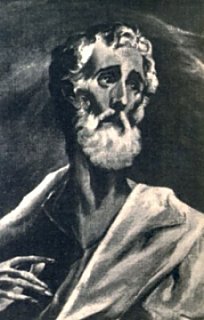 |
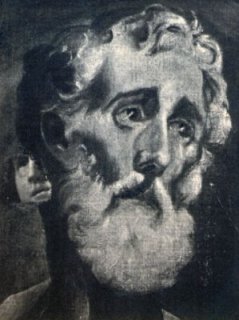 |
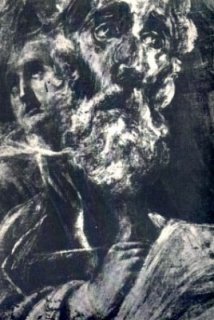 |
ABOVE LEFT: St. Peter: an El Greco forgery, inspired
by an original by the master, now in the Escorial. Arnau, Frank. The Art of The Faker – 3,000 years of Deception. Boston, Little Brown & Company, 1959. LCC 61-5317 |
| Scientific examination can reveal clues to the way in which an artist approached the creation of a painting and can give researchers valuable information on any particular artist's style and technique for use in evaluating future discoveries. |
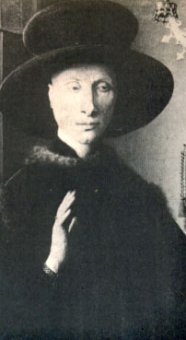 |
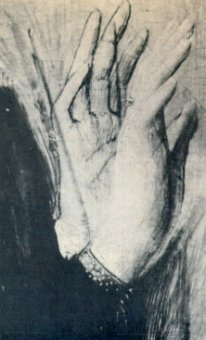 |
| Infrared can often reveal the processes used in the creation of the work. The infrared photograph of detail on the right from Jan Van Eyck's The Bethrothal of the Arnolfini (National Gallery, London) reveals the artist's original sketch for the graceful hand that appears in the painting. |
| The seascape below was painted during Vincent’s Van Gogh's visit to Sainte-Marie in June 1888 when he was living in Arles. The X-ray photograph shows Van Gogh’s characteristic bold and fluid brushwork in exaggerated contrast of light and dark. Almost every stroke conveys the dynamic movement of wind and waves. |
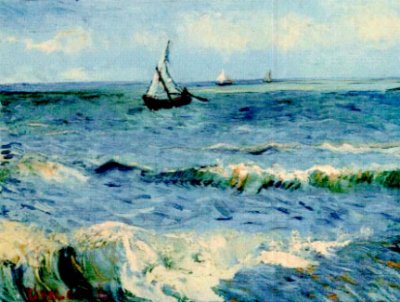 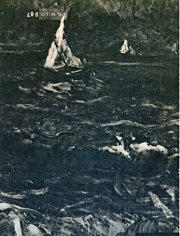 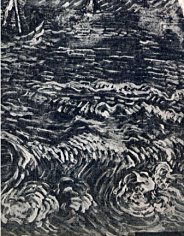
|
ABOVE CENTER: Sea View, Saintes-Maries-de-la-Mer by Vincent Van Gogh, 1888. Collection V. W. Van Gogh, Amsterdam. ABOVE LEFT: X-ray photograph of central portion. ABOVE RIGHT: Fraudulent copy of Sea View, put in circulation
by Otto Wacker c. 1925. X-ray photograph of central portion. Otto Wacker, whose career as an art forger is reviewed elsewhere on these pages, put thirty-three false Van Goghs on the market. When they were exhibited alongside the originals in a Berlin show in 1928, suspicion was aroused and Wacker was tried and convicted. Here and there Van Gogh puts thick accents of paint on top of a broader modeling, like ridges on mountains. The forger imitates the ridges only; that they lie directly on the plane of the canvas is revealed by the X-ray photograph. It also shows up the abrupt stroke due to the quick-drying medium used by the forger instead of oil paint. For devotees of Van Gogh's work, a most comprehensive website containing excellent images of almost all of his known works can be accessed by connecting to the internet and visiting The Vincent Van Gogh Gallery. |
| Intro (1) (2) (3) (4) (5) (6) (7) (8) (9) (10) (11) (12) (13) (14) (15) (16) (17) (18) (19) (20) Look for updates to this exhibit every week. Also visit the companion to this exhibit: FABULOUS FAKES |
| Special thanks to people without whom this exhibition would not have been possible: Thea Eichler, NRCA; Billie Tucker, New Rochelle Library; Ivar Hyden, Backstreet Gallery and all the contributing artists. |
| Additional information about the availability of Fabulous Fakes, the History of Art Forgery or any of the works in the exhibition may be obtained by contacting The New Rochelle Council on The Arts by email or by calling 212-529-2025. More information on the NRCA can be found by connecting to the internet and clicking here. |
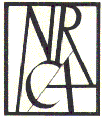 Fabulous Fakes and A History of Art Forgery © J. L. Dolice, 2001, 2003.
|
| All images in this presentation may not be copied, stored in any electronic retrieval device or used in any way without permission in writing. ISBN 0-935901-51-5. |
| Art Forgery | Art Haus |